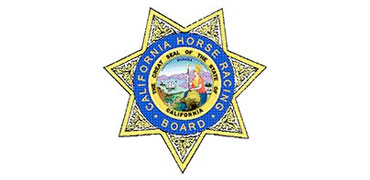By Bloodhorse.com
ARCADIA, Calif. (Apr. 20, 2018) — Although an official agreement has not been made, industry stakeholders said April 19 they have reached a compromise that could lead to limited transfer of veterinary records for claimed racehorses in California.
During the monthly scheduled meeting of the California Horse Racing Board Thursday at Santa Anita Park, CHRB commissioner Madeline Auerbach said she hopes a proposal will be on the agenda for action during the regulatory body’s May meeting.
The proposal detailed in the discussion packet for the Thursday meeting would create a new rule “that would create an exception for veterinarians … to disclose medical records of horses claimed in a claiming race, without violating rules regarding confidentiality. … (The rule) provides an additional safeguard for horses claimed in a claiming race by ensuring the horse’s medical records are transferred to the new owner.” That specific proposal was not addressed Thursday, but according to Auerbach and Alan Balch, the executive director of the California Thoroughbred Trainers, a new proposal would be limited to disclosing intra-articular joint injections.
“We really did narrow the scope of what we were doing initially,” said Auerbach, who also serves on the CHRB’s Medication, Safety, and Welfare Committee. “What we are looking for is a methodology—a mechanism—of when a horse is claimed … the records of injections will follow that horse’s claim. We are going to create a mechanism, which will mandate (over) a period of time—maybe 30 days—what kind of injection has the previous vet, who was responsible for that horse, given that horse?
“That’s what we’ve narrowed it down to. It’s not going to come back to committee.”
The CTT, which has expressed opposition to similar proposals in the past, will be part of a task force to help mold the new regulation, Balch said Thursday.
BALAN: CHRB, Trainers Argue Over Drug Disclosures
“There are a great number of issues and I think the resolution ultimately was that we’d have a working group—a task force, a small group—to work with (CHRB equine medical director Dr. Rick) Arthur, (CHRB executive director Rick) Baedeker, and others, (to iron) out those problems so we can move forward with this as quickly as possible. … There are things that have to be done with the language, we all agree, to make this effective,” Balch said. “CTT would be participating, (the Thoroughbred Owners of California) would be participating, and obviously the CHRB.”
The CHRB analysis portion of discussion item assigned to the rule proposal said Baedeker brought the matter before the California Veterinary Medical Board Feb. 18. The analysis stated the CVMB “approved and endorsed the CHRB’s proposal of requiring the transfer of all existing veterinary medical records for a horse claimed in a claiming race to the horse’s new owner.” Under the compromise detailed in the CHRB meeting Thursday, however, “all existing veterinary medical records” would not be transferred to the new connections of a claimed horse; only medical records of joint injections.
“We’re going to try to develop something that is simple and reasonable that provides information that protects the health and welfare of the horse. … We’ll probably be looking at a time frame of about 60 to 90 days and be limited to certain procedures,” Arthur said. “How that information will be transferred is important. It has to be done in a very simple way for both the person providing that information and the person that’s getting it.”
Later in the meeting, Dr. Robert O’Neil, The Stronach Group’s equine health and safety director, vouched for how easy the system can be, when he referenced Gulfstream Park‘s similar house rule regarding the transfer of injection records for claimed horses.
“I’m sitting here in a board meeting with you gentlemen and ladies and there’s been three claims at Gulfstream today—one in the first race, two in the second race,” O’Neil said. “I have the (records) for one of the (claimed) horses already today. It’s on my phone. … We’re not trying to reinvent the wheel. This is pretty simple and it’s worked really well (at Gulfstream).”


